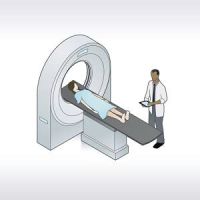Patients want to be informed of the risks associated with imaging but frequently are not. A University of Pisa research team concluded this after surveying radiology patients undergoing exams at Italian hospitals (Bastiani et al. 2021; Stewart and Smith-Bindman 2021).
Medical imaging has become vital for diagnosing and managing many diseases. However, the ever-increasing use of ionizing radiation-based modalities raises concerns about patients’ exposure, especially since single procedures could exceed 100 mSv. Although exposure recommendations vary geographically and by patient group, the International Commission on Radiological Protection advises patients to limit 50 mSv per year and 500 mSv for individual organs (Cherry et al. 2012). Also, the European Council Directive 2013/59/Euratom which introduces requirements concerning patient information, became effective on 27 August 2020 (European Society of 2015). Thus understanding patients’ knowledge about medical radiation and its potential risks is helpful.
To better understand patients’ knowledge about medical radiation and its potential risks, a survey study in 16 hospitals in Italy was conducted between 1 June 2019 and 31 May 2020. Interviewers asked 2866 patients waiting to be imaged about their basic knowledge of ionizing radiation levels and health risks, earlier imaging tests performed, and information and communication about radiation protection issues.
Over half (55.1%) did not know that a chest computed tomography (CT) delivers a larger radiation dose than chest radiography. Only 52.3% knew that radiation emissions could continue after nuclear medicine examinations. About 22.3% incorrectly believed that age is unrelated to radiation risks. Around 44.4% felt their radiation risk knowledge was inadequate. Most (80.4%) wanted to be informed about radiation risks by medical staff. Receiving the risk information from health care professionals and having a higher educational level was associated with knowing the radiation issues better.
Given the widespread lack of exam risk awareness, better efforts to communicate the imaging risks to patients are needed. “Misunderstanding the potential harms of imaging hurts patients because they cannot appropriately balance the risks and benefits and engage knowledgeably in their care,” said Dr. Rebecca Smith-Bindman at the University of California, San Francisco, in a study commentary (Stewart and Smith-Bindman 2021).
Patients want to learn about these risks from their referring physician, who often possesses inadequate knowledge of the lifetime cancer risk arising from imaging. Health leaders should ensure that ordering clinicians know enough to inform patients of the risks properly. In support of this view, 92% of internal medicine physicians feel it their responsibility to inform the patient.
Radiologists can also fill this gap by directly informing patients of the strategies to reduce excessive exposure while maintaining diagnostic accuracy. However, radiologists often have limited patient contact. However, the opportunity exists for a better collaborative relationship between radiologists and emergency department physicians where radiologists directly consult.
References:
Bastiani L, et al (2021) Patient perceptions and knowledge of ionizing radiation from medical imaging. JAMA Netw Open, 4(10), e2128561.
Cherry SR, Sorenson JA, Phelps ME (2012) Chapter 23 - radiation safety and health physics, in Cherry, SR, Sorenson, JA & Phelps, ME (eds), Physics in nuclear medicine (fourth edition). Philadelphia: W.B. Saunders, 427-442.
European Society Of R (2015) Summary of the european directive 2013/59/euratom: Essentials for health professionals in radiology. Insights into imaging, 6(4), 411-417.
Stewart C and Smith-Bindman R (2021) It is time to inform patients of medical imaging risks. JAMA Netw Open, 4(10), e2129681.



























